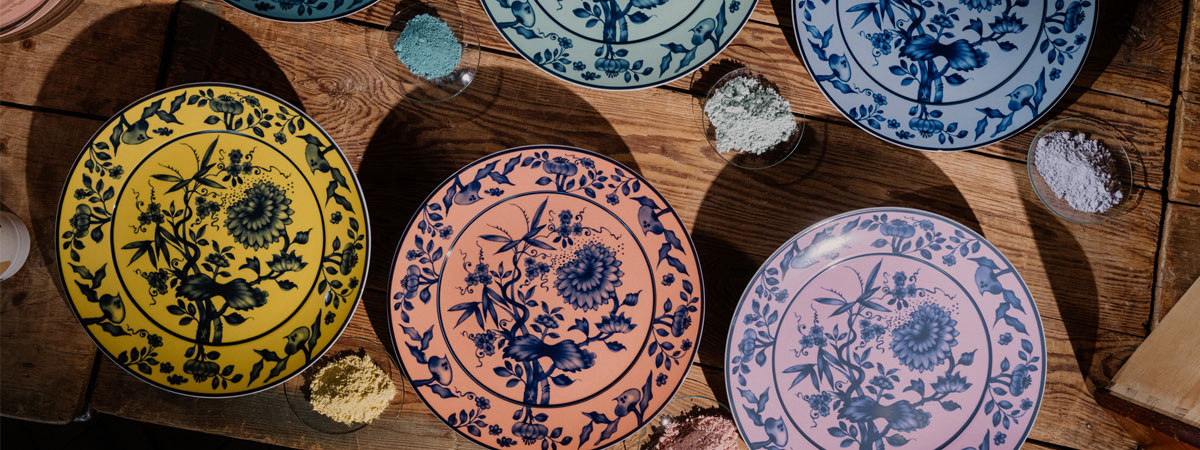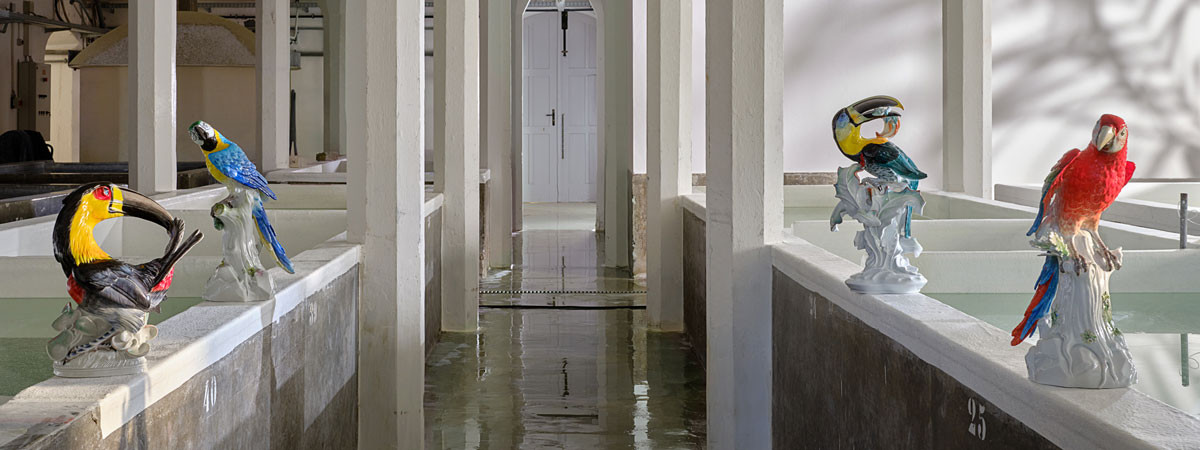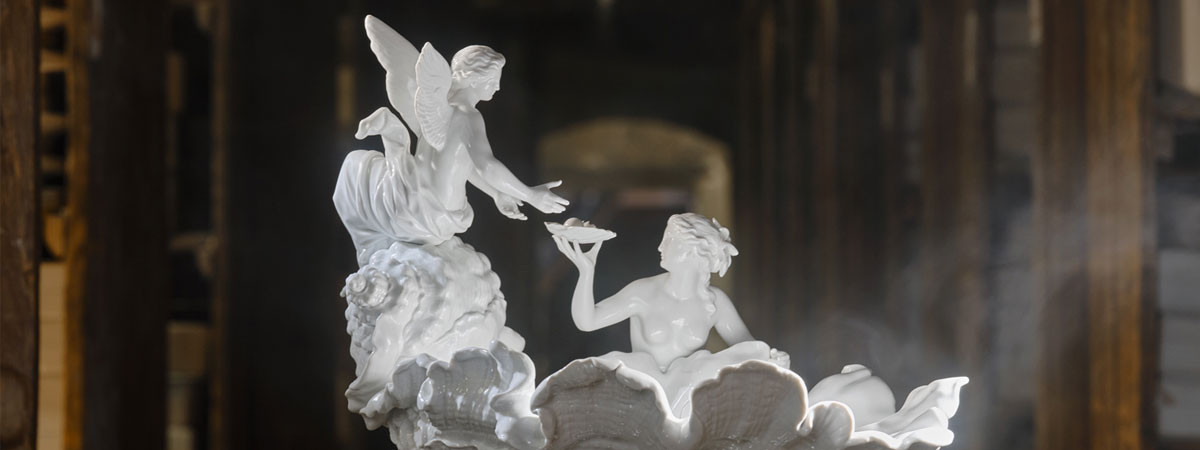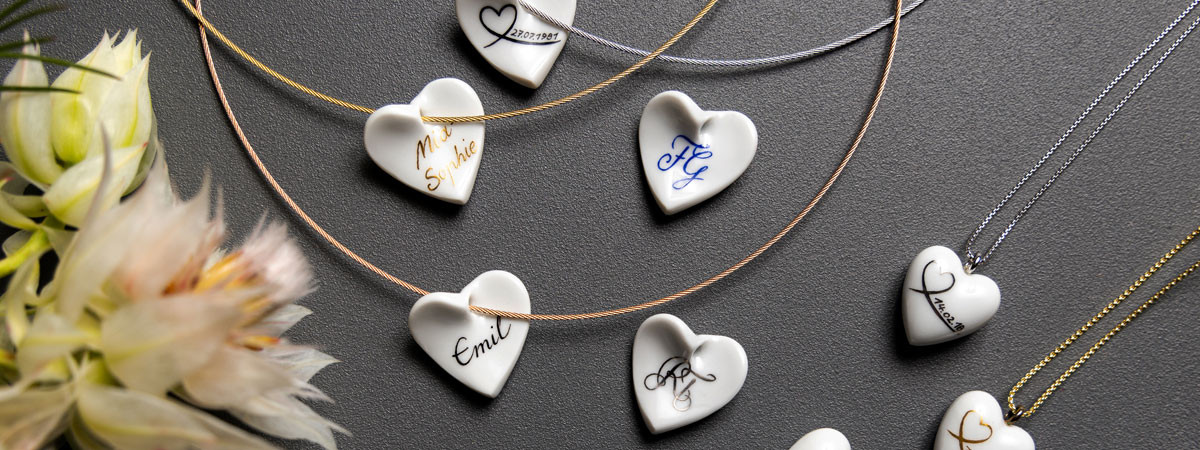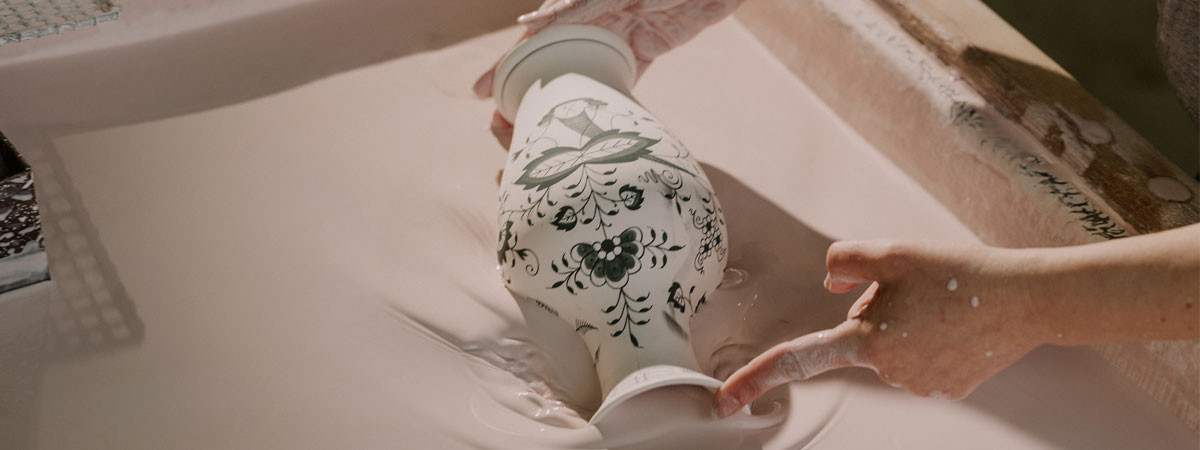-
1708The invention of the first European porcelain
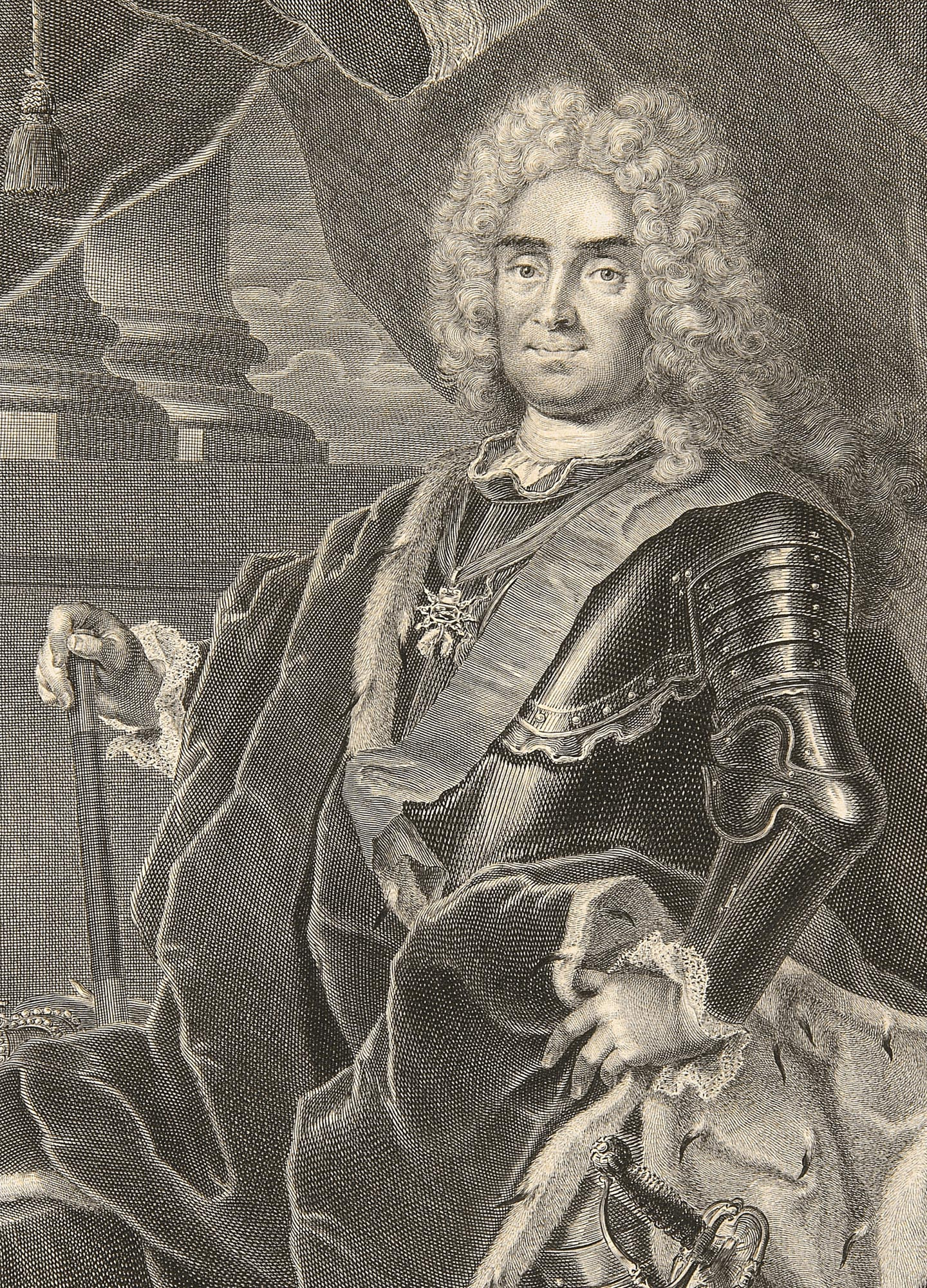
In the 17th century, all of Europe was in the thrall of Chinese porcelain. With pure white biscuit, its unique malleability, and its magnificent decoration, it exceeded every other ceramic of the era both in terms of quality and finesse. Asian porcelain was so valuable and rare, that it was said to have magical properties, for example, that it would fall apart when it came into contact with poison.
European aristocracy was struck by a porcelain craze. In particular August the Strong, Elector of Saxony, who described his own obsession as a porcelain fever – a maladie de porcelaine. During his reign, he spared no effort or expense to acquiring sought-after porcelain pieces. While the Elector’s coffers were quite full thanks to Saxony’s rich ore and silver deposits, splendour and pomp still came at a steep price, as European merchants in Asia were only able to pay in gold and silver – a circumstance that prompted the Sun King Louis XIV to melt down all of the silverware in Versailles in order to finance the import of these exotic goods.
To circumvent this economic imbalance. Augustus the Strong, like many rulers of the time, placed his bets on his alchemists to succeed in turning simple metals into gold. For this, in 1702, he summoned the young alchemist Johann Friedrich Böttger to Dresden. After two years of failed experiments, and a botched attempt at fleeing to Vienna, Böttger was placed under the supervision of the Electoral Mathematician and Physicist Ehrenfried Walther von Tschirnhaus. The collaboration between the two proved very successful.
Together with the mining officer Gottfried Pabst von Ohain, and miners and smelters from Freiberg, Böttger systematically researched various material offsets and performed a series of tests on the behaviour of Saxon clays when fired.
Finally, in November 1707, after years of experimentation Böttger succeeded in producing red stoneware or Jaspis porcelain. This material revealed the production techniques required to produce white porcelain. The red clay simply needed to be replaced with white kaolin – the final piece of the puzzle. On 15 January 1708, the first European white porcelain was fired. Formula at hand, Augustus the Strong’s great dream began to take shape – European hard-paste porcelain was now a reality. On 6 June 1710, Augustus the Strong established the first European porcelain manufactory: the “Royal Polish and Electoral Saxon Porcelain Manufactory”. The Albrechtsburg in Meissen would remain the production facility for more than 150 years. The arcanum of how porcelain is made was thought to be safe within its castle walls.
It didn’t stay secret for long, however, and soon manufactories would be established across Europe. In order to signify the exceptional quality of Meissen porcelain and ensure its authenticity, the signature Crossed Swords, taken from the coat of arms of the Electorate of Saxony, was introduced in 1722, making it one of the oldest continuously used trademarks in the world.
-
1720Chinoiseries
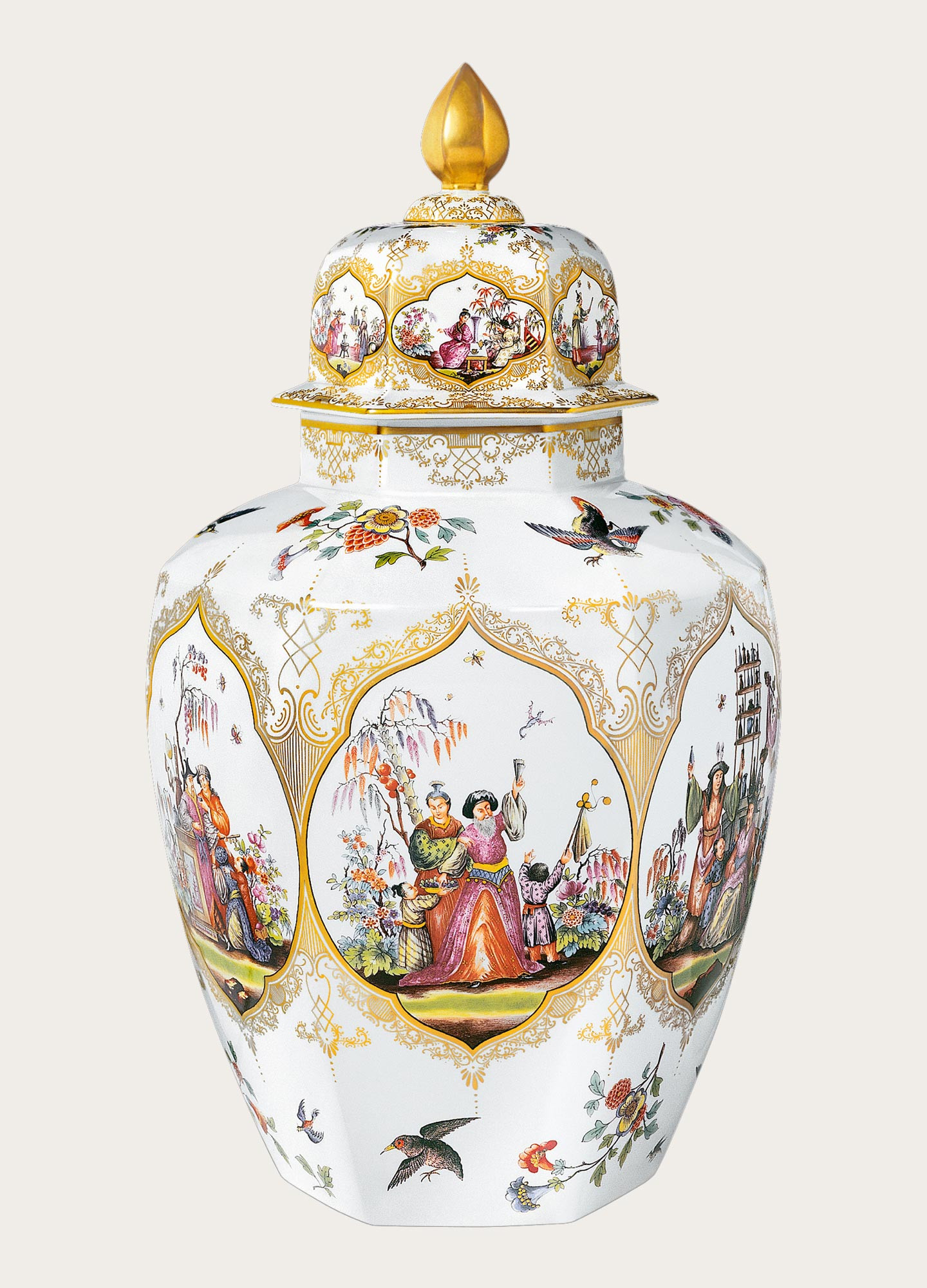
During the 18th century, chinoiserie becomes all the rage in Europe – a development that can be traced back, in part, to the fascination for Chinese porcelain and the rich imagery of its decorative patterns. The history of the Meissen porcelain manufactory also begins with the imitation, all the way down to the finest details, of Eastern Asian styles and designs. The Meissen porcelain that was manufactured from the 1720s on clearly reflected the influence of Eastern Asian porcelain art. Among its first porcelain pieces were decorative patterns as well as cup and pitcher designs that underscore this marriage of Eastern Asian ideas and European traditions. However, some misunderstandings arose when it came to the transfer of certain motifs: the most famous example of this is Meissen’s “Onion Pattern”, which in fact doesn’t depict onions, but peaches and melons.
This early creative period in the manufactory's history is closely linked to the porcelain painter Johann Gregorius Höroldt, who moved to Meissen from Vienna in 1720. Under his aegis, the manufactory developed the first heat-resistant under- and on-glaze paints, which allowed Meissen to create undreamed-of colourful decors.
His famous chinoiseries depict the imaginary worlds that 18th century Europeans thought were typical of Eastern Asia at the time – a veritable paradise in the form of stylised plants and animal figures, and fanciful scenes from everyday Chinese life. During his time at MEISSEN, Höroldt created decorative motifs that set the tone for all other European manufactories. His “Indian Flowers” motif as well as his “Yellow Tiger” and the “Kakiemon” are all excellent examples of this style.
-
1730Large Sculptures
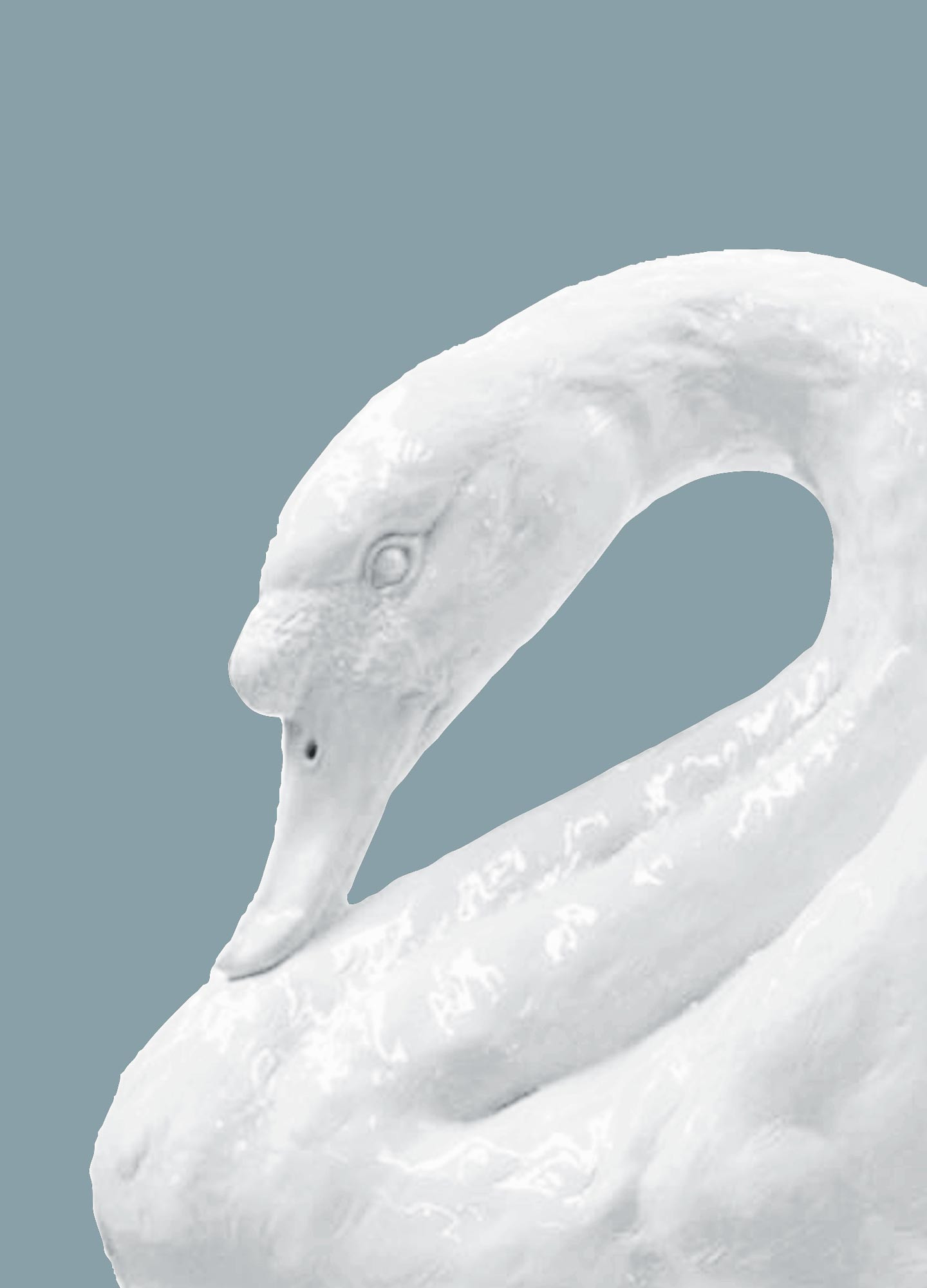
The manufactory’s so-called sculptural period began in 1730, two decades after its founding. This period is most known for its production of numerous large-scale sculptures in the Baroque style of the era. What sparked this shift was a series of manufactory orders for the Japanese Palace in Dresden, which was to be extended at this time to house Augustus the Strong’s extensive porcelain collection.
Between 1730 and 1736, modellers Johann Gottlieb Kirchner and Johann Joachim Kaendler were commissioned by the Elector to create a large number of life-sized animal sculptures. This porcelain menagerie of both domestic and exotic animals served as a means of representation for the Elector.
With these large-scale sculptures, the Meissen modellers not only broke new ground artistically, but also presented the manufactory with technological challenges that were unheard-of at that time.
In order to study the animals, Kirchner and Kaendler used the Elector’s art and natural history collections, hunting cabins, and the game reserve at the Moritzburg hunting palace. The artists’ only knowledge of exotic creatures such as elephants and rhinoceri came either from word-of-mouth or paintings. Their bizarre forms, which can be seen today in the entrance of the Meissen Porcelain Foundation Museum, are the results of Kirchner’s creative genius.
To this day, the emergence of life-sized animal sculptures from the fires of the furnace is still a breath-taking event. The realism and accuracy of their design in these dimensions remains unparalleled.
Augustus the Strong dies in 1733. Kirchner left the manufactory and Johann Joachim Kaendler was appointed master modeller of the Meissen porcelain manufactory that same year.
-
1748Centrepieces
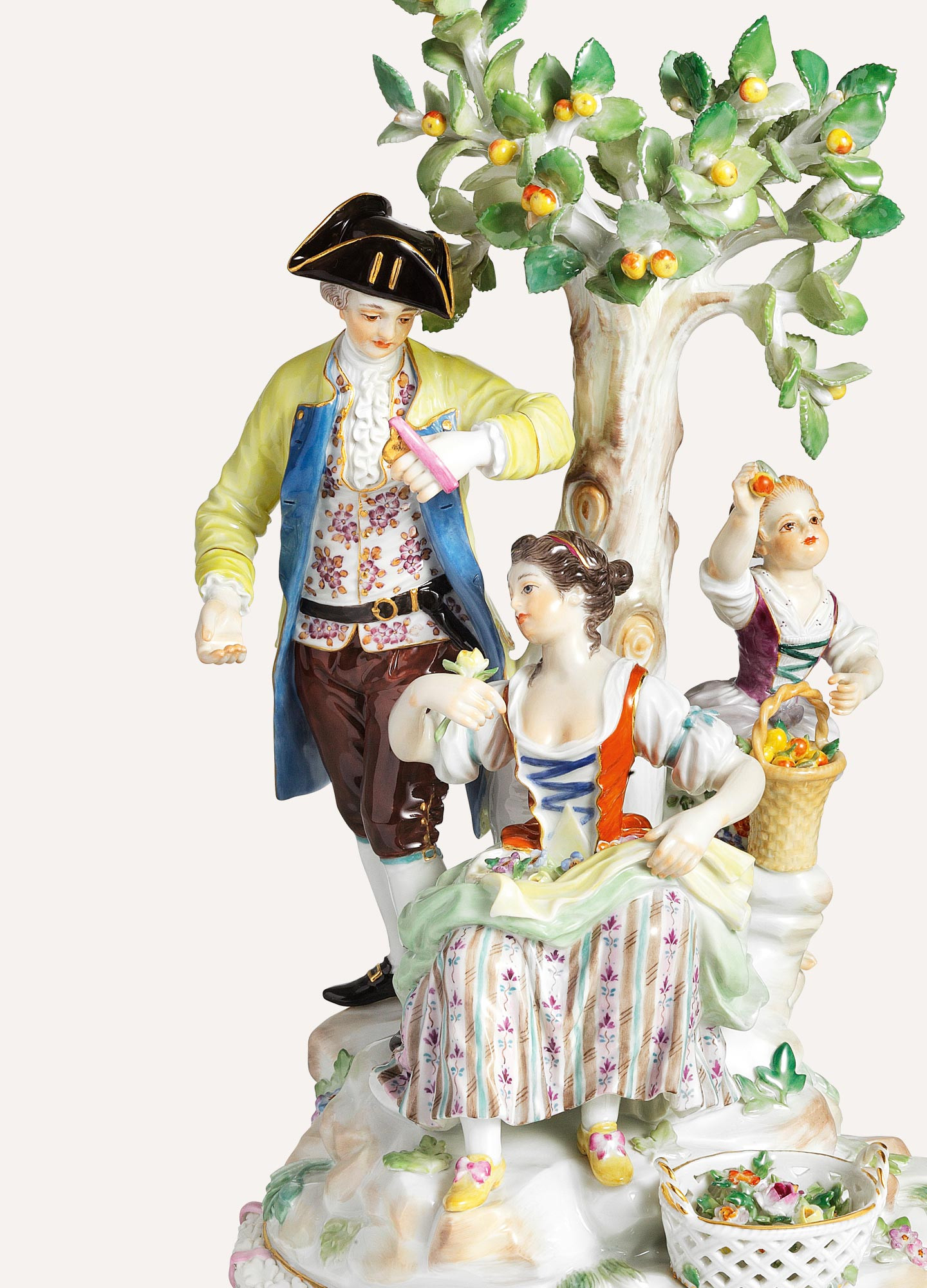
Opulent celebrations as a symbol of power and a display of riches shaped life at the Saxon court. These events served to ceremoniously demonstrate political power, financial strength, and cultural refinement. Every art form was involved in the organisation and implementation of these celebrations. Even the host and his guests would be part of the production. They would dress up as the different seasons, elements, continents, and even antique deities. These themes would in turn also be reflected in the porcelain design. Allegorical figures with subtle erotic innuendos were often part of the table services and decorations of that time. The mythological exaltation of Augustus the Strong was expressed in the form of opulent centrepieces. Genteel porcelain figures rich with double entendres, both coquettish and suggestive, would serve as conversation pieces. The goal was to create a brilliant display of absolute power.
The most famous example of this sort of display is Johann Joachim Kaendler’s “Temple of Honour” from 1748.
-
1739Snowball Blossoms
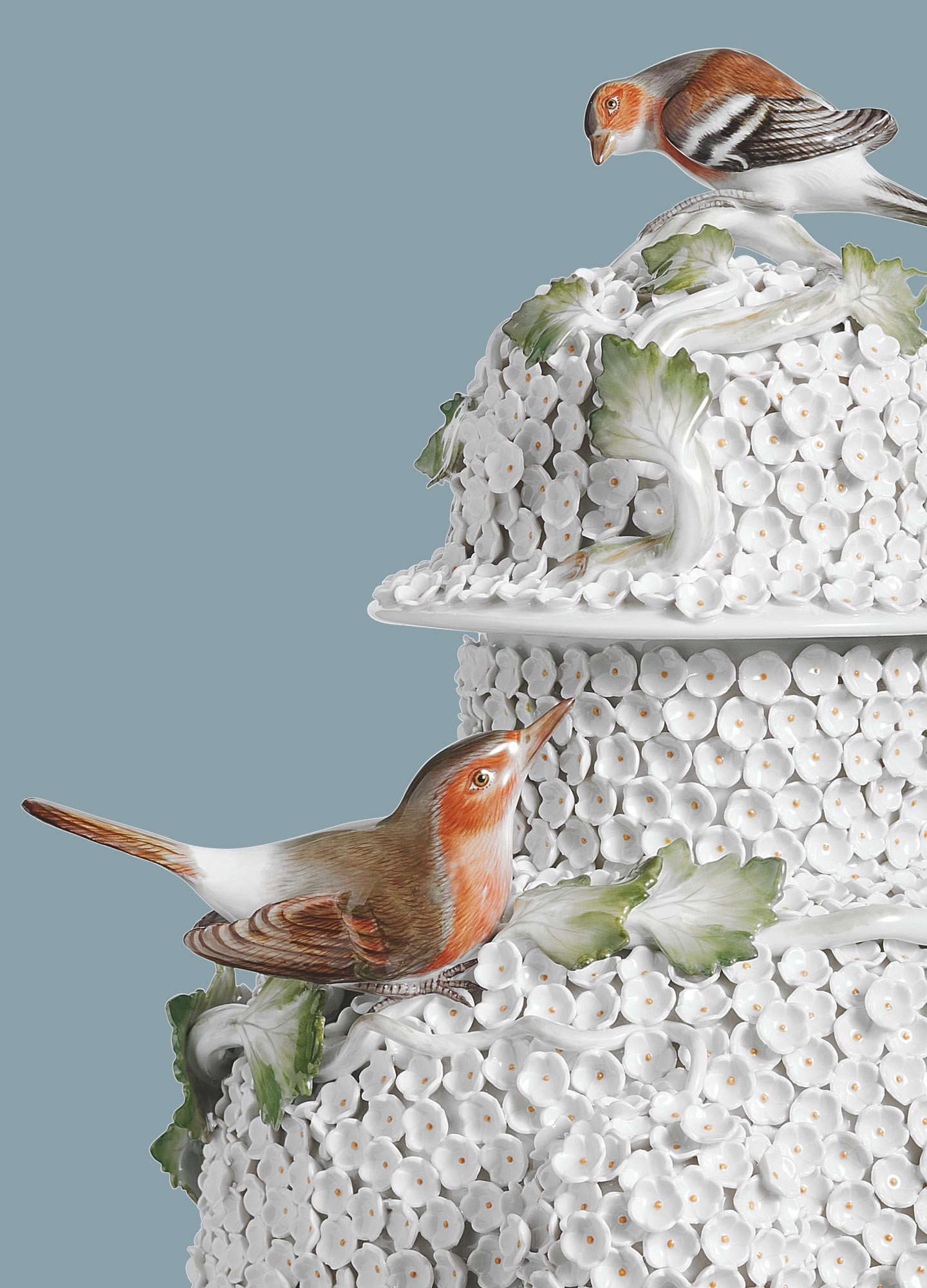
Fueled by the French royal court, an artistic change was change was taking root all throughout Europe. No longer was it the fine chinoiseries that set the tone, but rather a more opulent European style that focused on its own motifs.
This change in tastes necessitated the introduction of new designs and shapes at MEISSEN, that not only moved away from earlier Eastern Asian influences but would also satisfy the prevailing Rococo taste for lush opulence. Johann Joachim Kaendler’s “Snowball Blossoms” are some of the most exceptional artistic works of this era – a masterpiece by one of Meissen manufactory’s most important and influential porcelain modellers. In 1739, at the behest of Augustus III, Kaendler created a table service that the King could use to court his wife, Maria Josepha of Austria.
Abundantly applied to cups, vases, and boxes, the floral decor posed particular challenges to the embossers, painters, and master firers of the first porcelain manufactory in Europe, which had only been established 30 years earlier. Every single blossom is created by hand, applied to the container with a pointed utensil, and then individually hand-painted. With the “Snowball Blossom”, shortly after its founding, MEISSEN was able to set new aesthetic and technical benchmarks for porcelain design that would blaze a trail for every other European porcelain manufactory.
-
1737Swan Service
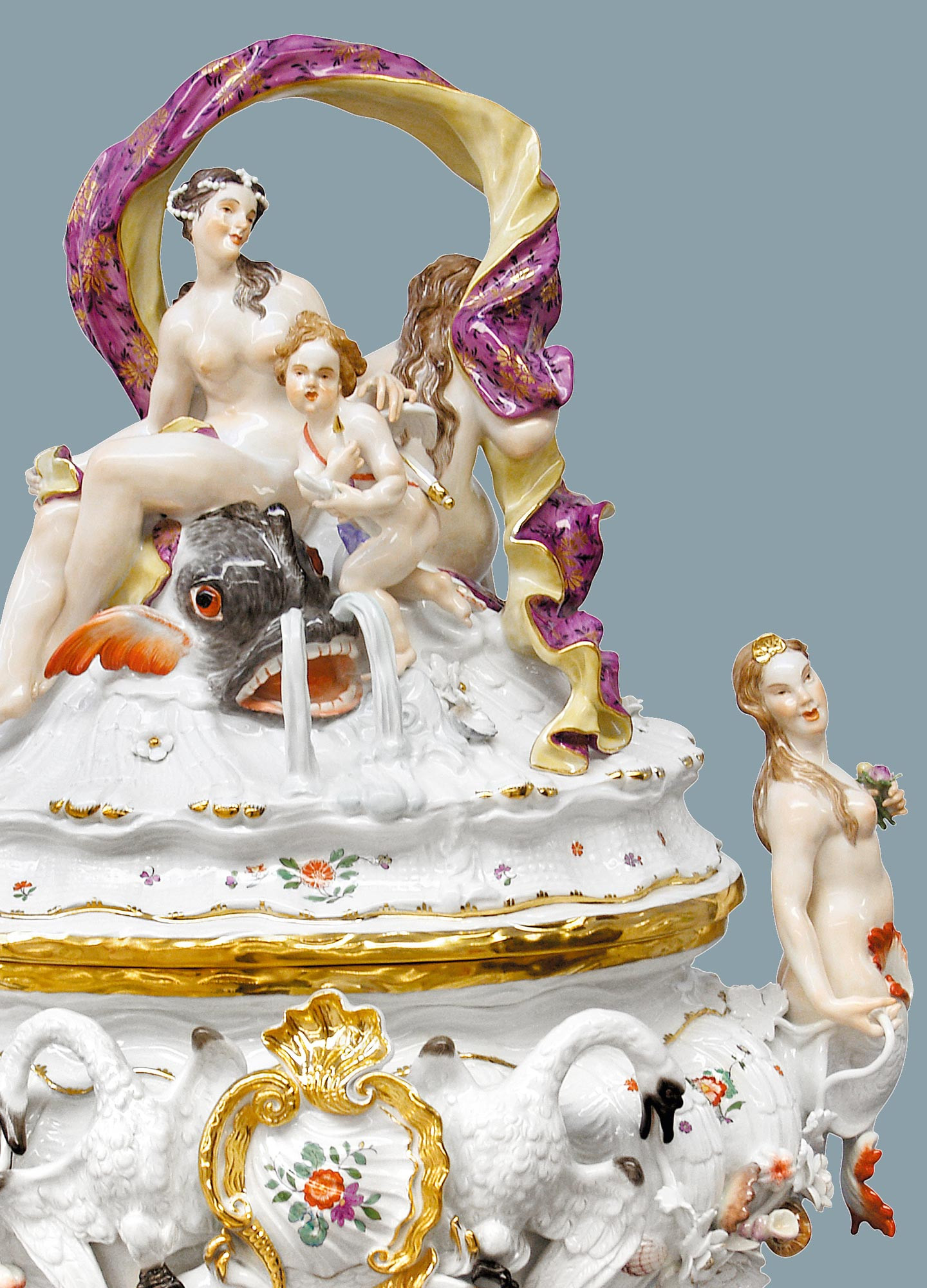
It is an impressive testament to a glamorous bygone era, the opus magnum of German Baroque art: Johann Joachim Kaendler’s “Swan Service.” Commissioned in 1737 by Heinrich Graf von Brühl – first minister at the time under Augustus III – the service took five years to complete. Never before had an ensemble of this scope and with such an opulent wealth of sculptural design been created. The service, which was designed for 100 persons, incorporates more than 2.200 individual pieces.
Swans form the central motif of the decorative elements and appear in the service not only as bas-reliefs but also as sculptural elements and as vessel shapes. Even though this key motif gives the service its name, the tableware itself is also peopled with countless other figures from Greek mythology. For these figures, Kaendler was inspired by drawings and copper engravings from the print collections housed in the nearby capital and royal seat of Saxony, Dresden. Every vessel depicts a different variation of the mythological leitmotif. Glaucus, Galatea and her entourage of Nereids, sea nymphs, child Tritons, and dolphins – Kaendler immortalised all of these mythological creatures in Baroque style as part of this service. The “Swan Service” is a visually stunning assembly of shapes, lavish reliefs and sculptural elements that exceeded its commissioner’s wildest expectations.
-
1722Hunting
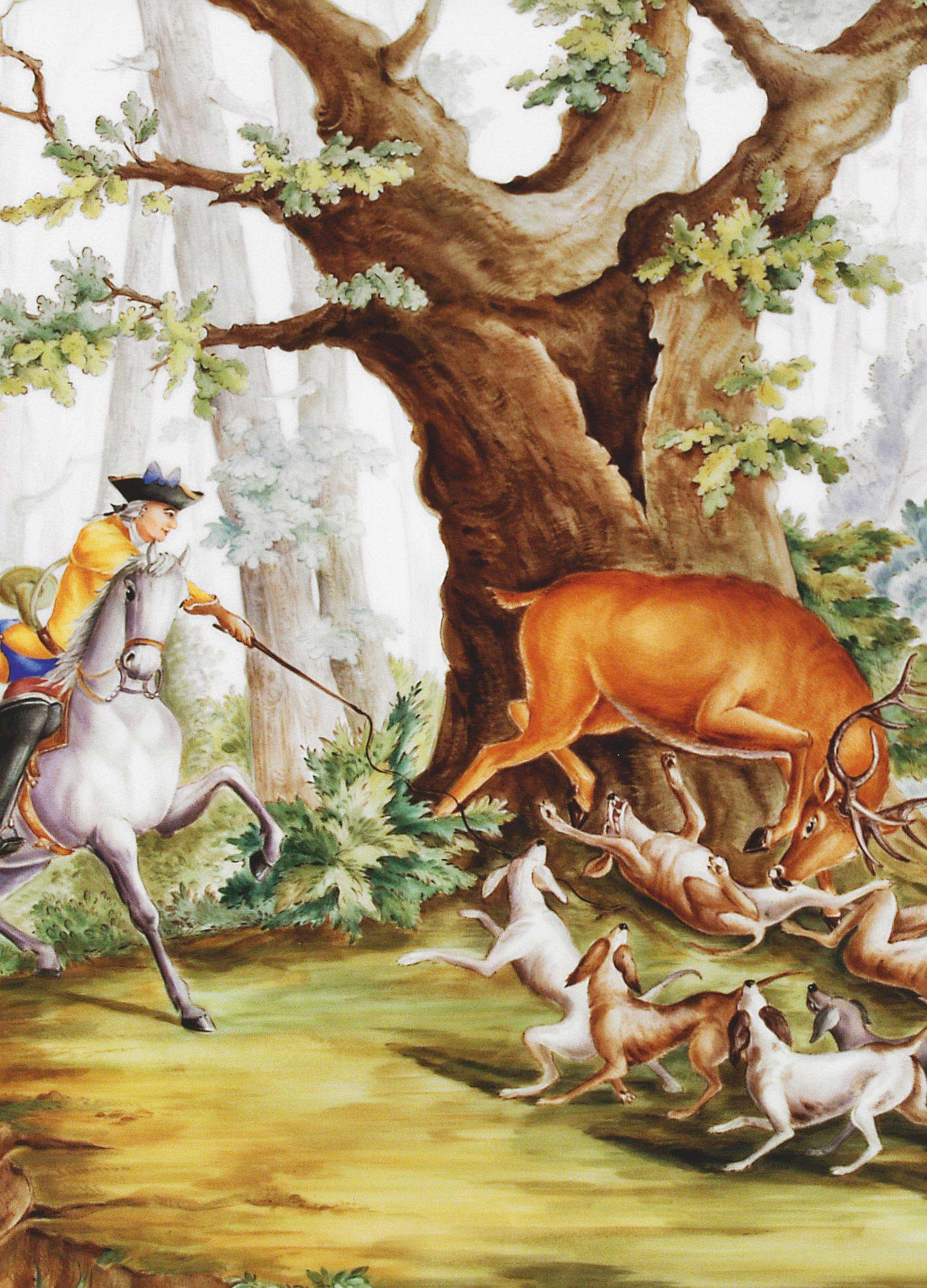
In 1722, shortly after its founding, hunting imagery was adopted into to the Meissen manufactory’s repertoire. The vases, dishes, and trophies adorned with animal and hunting motifs were used to decorate Augustus the Strong’s many hunting lodges. One of the key representatives of this genre of scenic and figurative decor was porcelain painter Johann Georg Heintze, a student of Johann Gregorius Höroldt. Early on, Heintze specialised in hunting scenes that were inspired by the copper engravings of Johann Elias Ridinger and Georg Philipp Rugendas. However, Heintze was not asked to make faithful reproductions of these engravings, but rather create his own fantastical compositions in which he could rearrange the central motifs of the originals or place them within local landscape scenery.
Starting at the end of the 18th century, MEISSEN moved away from these dramatic hunting motifs, focussing instead on wild animals and birds, painted in rich colours and depicted in their natural habitats, thus representing the natural idyll of the forest. Since this time, these pieces have become an essential element of nature-themed table settings.
Alongside the painterly execution of these natural themes, the topic of the hunt also continues to play an important role in Meissen’s design vocabulary to this day. Jörg Danielczyk’s modern hunt-motif candle holders, which were introduced in 2004 and feature delicate porcelain oak leaves that pose a great challenge to the manufactory’s embossers, is a particularly spectacular example of MEISSEN’s abiding passion for the hunt.
-
18th centuryMythology
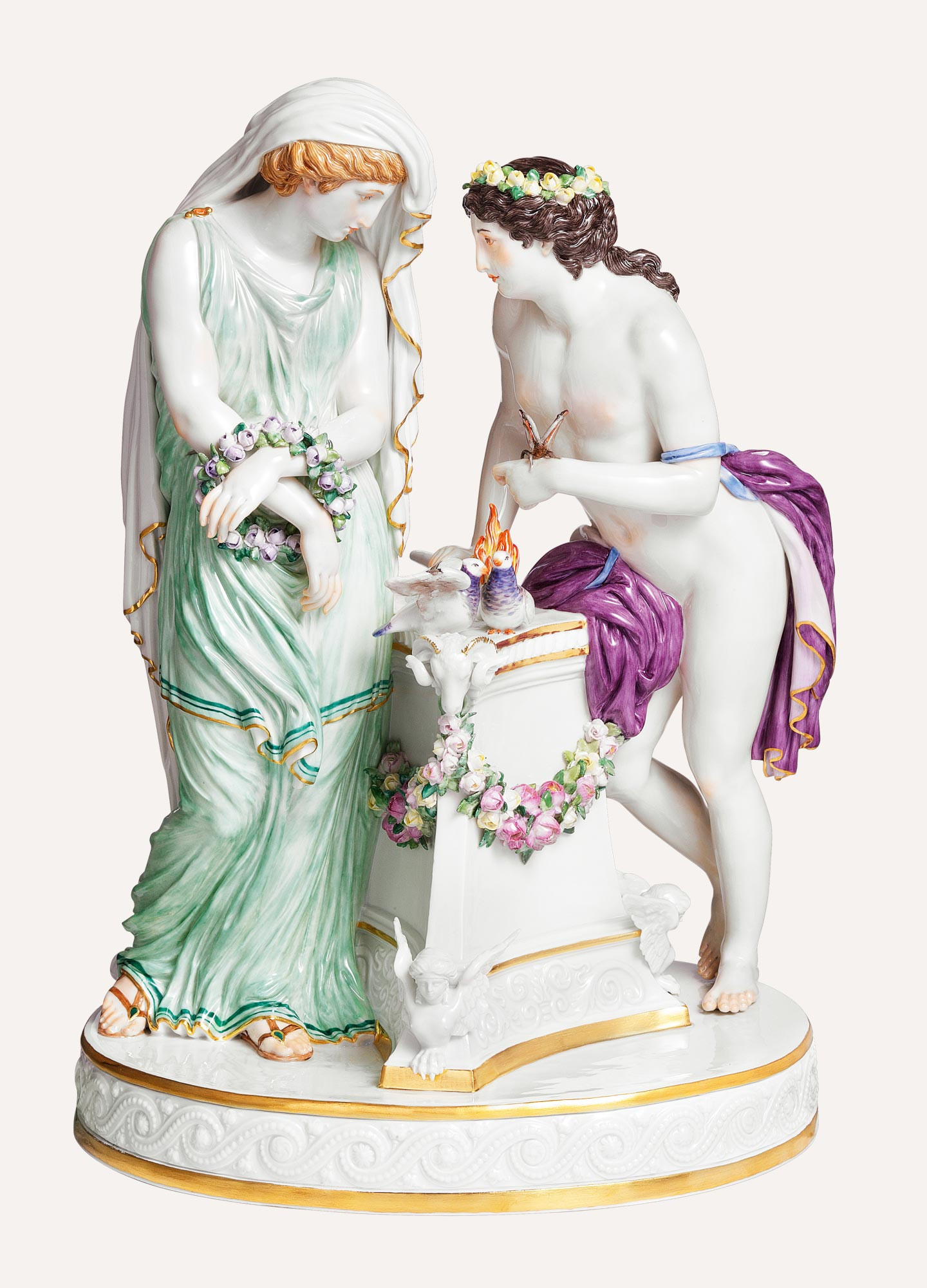
Since the mid-18th century, Meissen’s artisans have drawn on classical mythology as a rich source of artistic inspiration.
Female figures depicted as muses, opulent genii as the embodiment of the arts or as a Baroque Triton in Kaendler’s epochal “Swan Service” – these porcelain creations truly reflect the fantasy and masterful skill of Meissen’s artisans of the Baroque era.
During the Neoclassical era, the ancient world became an obligatory aesthetic style, with ornaments and decorative aspects imitating antique architectural styles.
MEISSEN increasingly focused on the design of table services, but also on decorative elements such as friezes, festoons, and garlands. Winckelmann’s study of antiquity was authoritative, while inspiration was found in the royal collection’s ancient sculptures housed in the Japanese Palace and the east hall of the Stallhof in Dresden.
-
1775In search of style / The Marcolini era
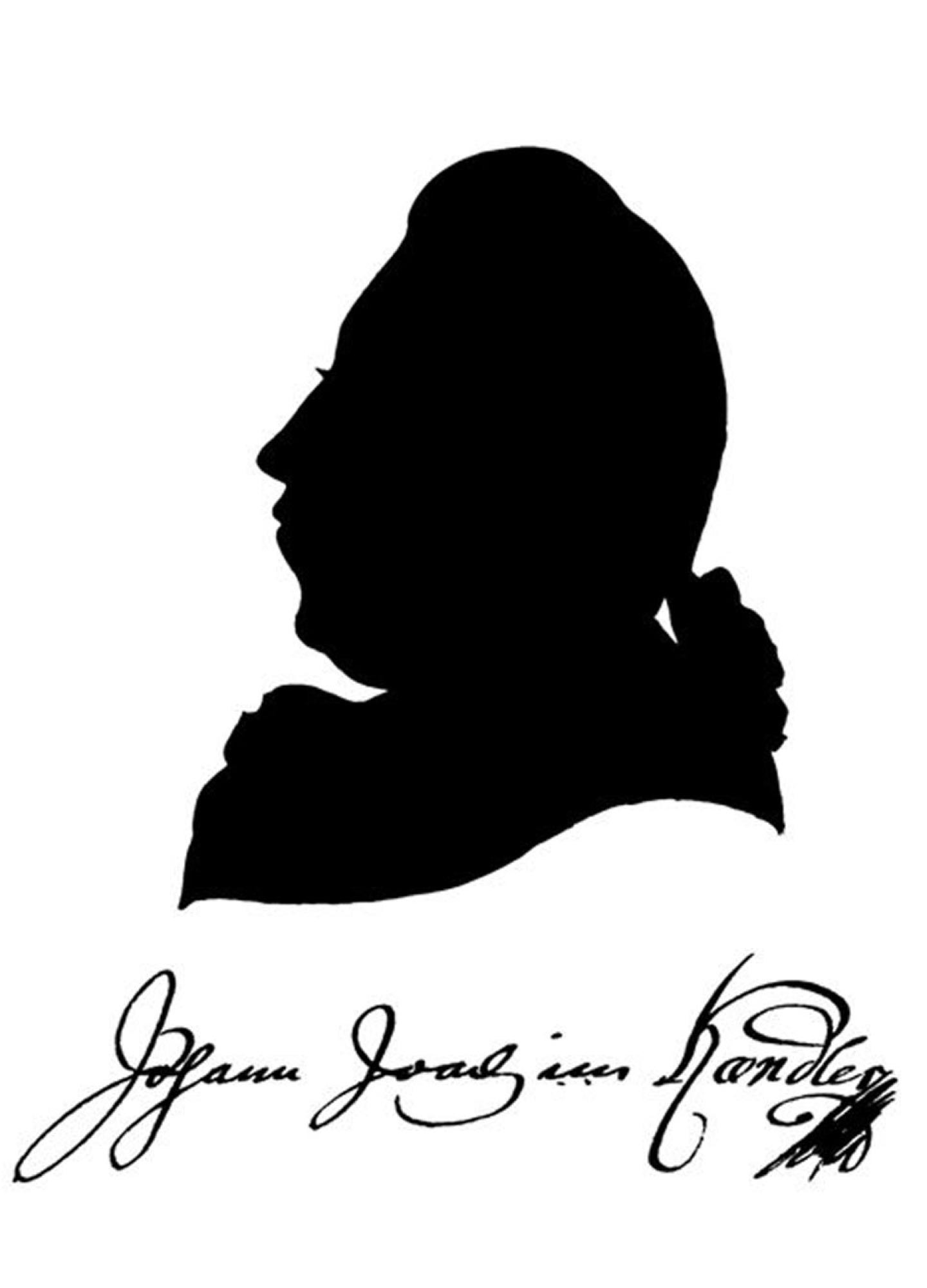
The Seven Years’ War was fought between 1756 and 1763 and marked the end of Meissen’s first golden age. The wartime deprivations made it difficult for the manufactory to even survive.
At the same time, Humanism and the Enlightenment in Europe were establishing new civically oriented morals and values. A new movement in decorative and visual arts – Neoclassicism – originated in France and began to gain momentum in all of Europe. The movement represented a return to the world of classical antiquity, fuelled by archaeological discoveries at Herculaneum and Pompeii.
1764 saw the French modeller Michel Victor Acier’s arrival in Meissen, bringing with him innovative artistic ideas that were keeping in with the spirit of the times.
He is among the most influential artists of the so called Marcolini era, named after Count Camillo Marcolini, who was appointed the new manufactory director in 1774. During this time, a stronger focus on the architectural and ornamental designs of classical antiquity replaced vibrant Baroque colours with camaïeu, or monochromatic, painting styles. For a time, the Manufactory even did away with glazing.
With the deaths of both of Kaendler and Höroldt in 1775, MEISSEN bid farewell to two of the most important artists in the history of the manufactory. They paved the way for all of Meissen’s artistic production to follow.
-
1817The Royal Saxon Porcelain Manufactory
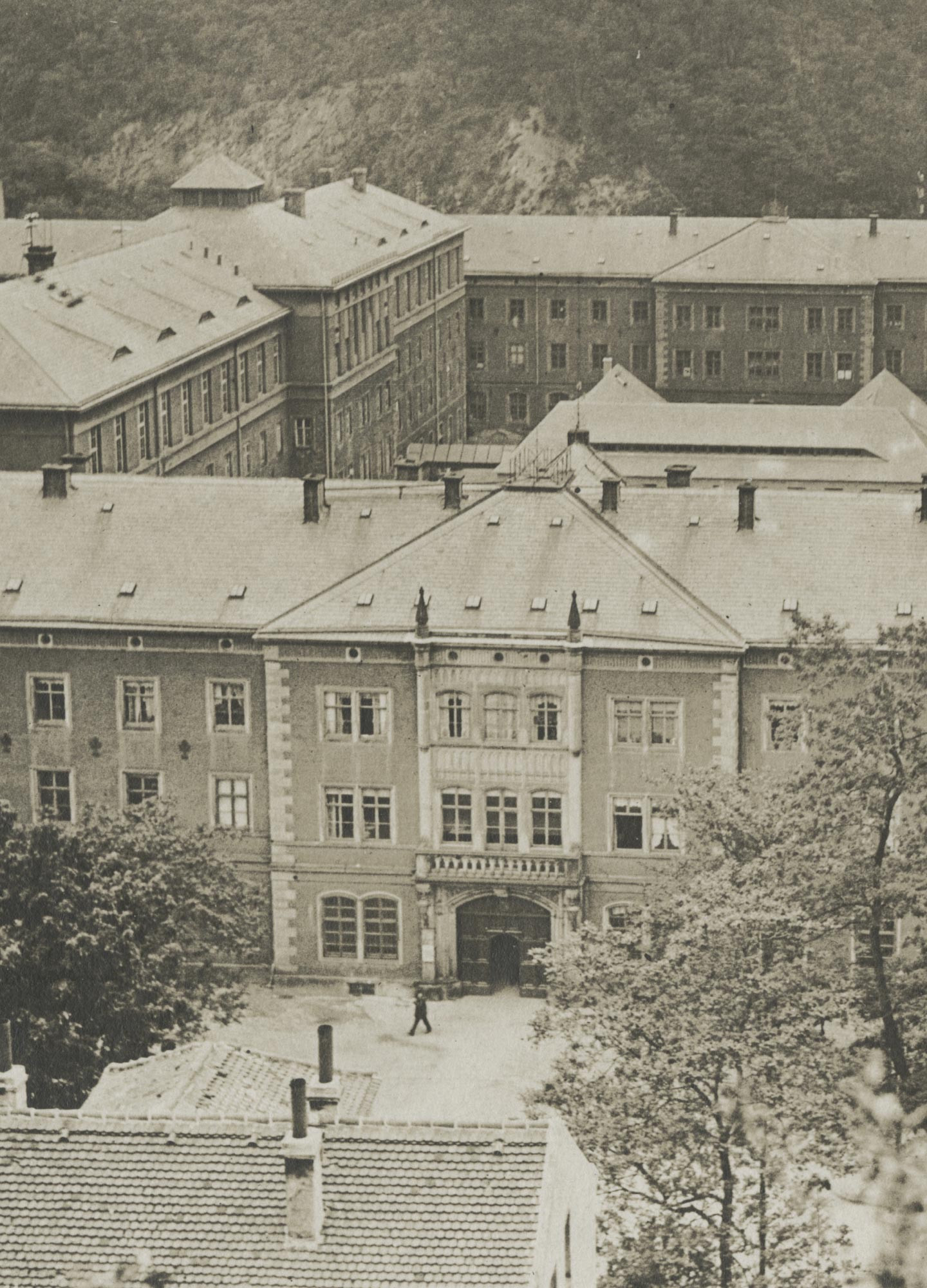
With the formation of the Kingdom of Saxony, the manufactory was renamed the “Royal Saxon Porcelain Manufactory” in 1806. In 1814, mining councillor Carl Wilhelm von Oppel was named Marcolini’s successor and the new director of the manufactory. He initiated a number of necessary changes on artistic, technical, and operational levels. With the appointment of Heinrich Gottlob Kühn, he introduced an operations supervisor to MEISSEN who would be responsible for the most significant technical and technological innovations of this period.
In 1817 he developed the new chrome green under-glaze paint that Johann Samuel Arnold would use to create a new, popular decorative motif: the “Green Vine Leaf Garland”.
During his time at MEISSEN, Kühn also introduced the round kiln and, in 1827, he invented what was known as “liquid bright gold” and is currently known as glossy gold – a liquid gold preparation that, unlike burnished gold, did not require polishing after firing. This new preparation allowed detailed reliefs to be completely gilded for the first time ever.
From 1831 the manufactory is placed under the supervision of the royal treasury. -
19th centuryIndustrialisation
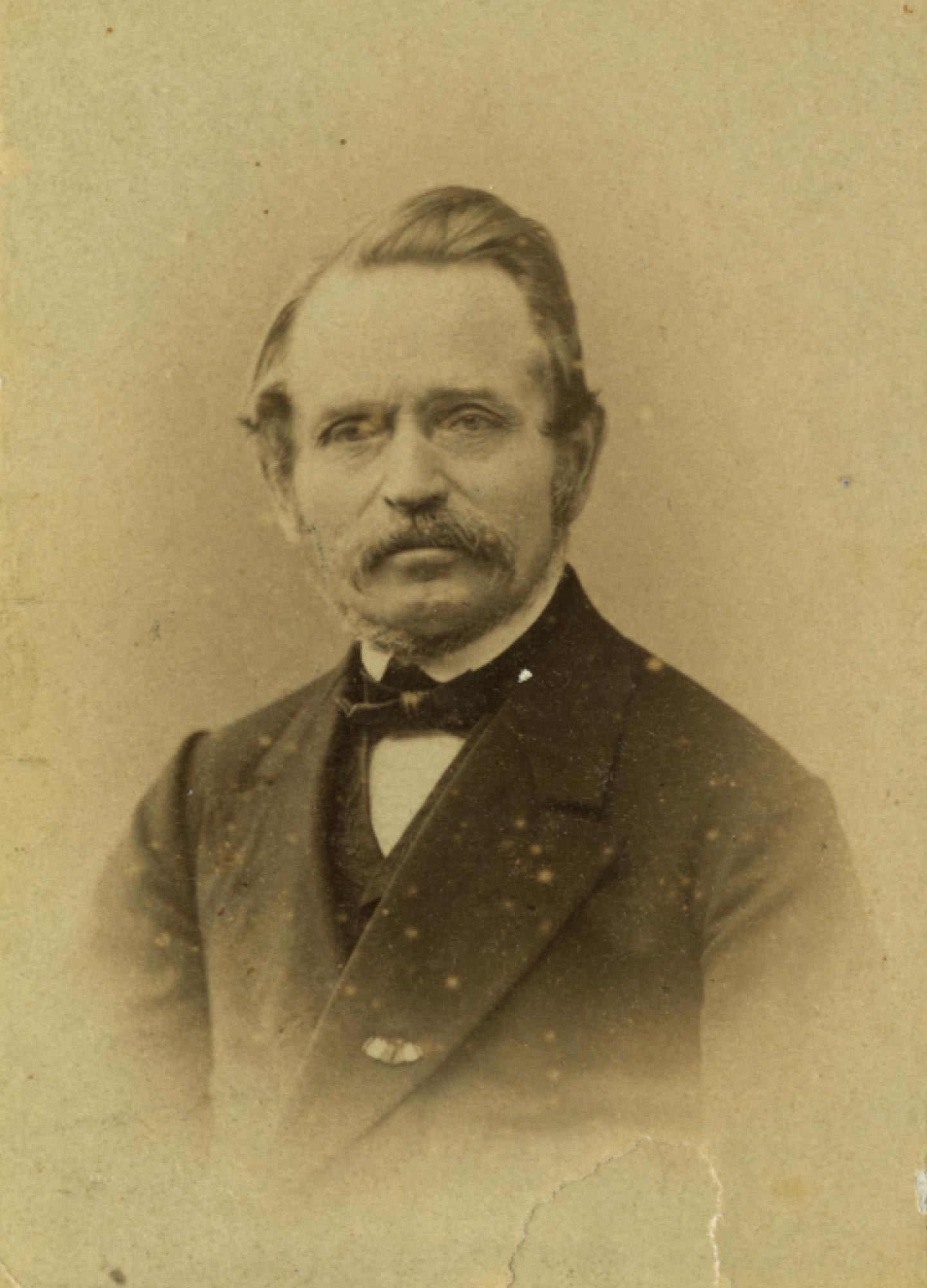
By the mid-19th century, the Industrial Revolution had increased the purchasing power of the newly established middle class. Porcelain, which had been reserved solely for nobility in the previous century, was now accessible to broader spectrum of society. The demand for new designs and patterns to demonstrate the prestige of the newly prosperous middle class went hand in hand with the growing demand for Meissen porcelain.
One key figure from this era is Ernst August Leuteritz, who managed the design department of the manufactory from 1849 to 1886. Under his aegis, the Meissen modellers and porcelain painters from this period drew on the manufactory’s rich heritage, freely mixing styles and aspects from bygone eras to create new forms and designs. In this period of historicism, countless porcelain pieces were created in a variety of neo-styles.
The most important of these styles is Neo-Rococo or Rococo Revival, with its roots firmly planted in the opulence and versatile design language of Meissen Baroque. This movement kicked off the manufactory’s second golden age.
The magnificent vases, vessels, and figures by Ernst August Leuteritz that were exhibited at the World’s Fairs are particularly noteworthy. Leuteritz was responsible for the manufactory’s “Snake-handled Vases”, among other things. This imposing vessel became one of the manufactory’s classics.
The rooms of the Albrechtsburg soon became too small, its labyrinthine corridors hampering a smooth workflow. An historic palace building, after all, no longer seemed the appropriate housing for a modern manufactory.
From 1861 to 1864, the new production facility was built in Triebischtal, where the Meissen Porcelain Manufactory is still located today.
-
1907A new self-image – modern art in porcelain
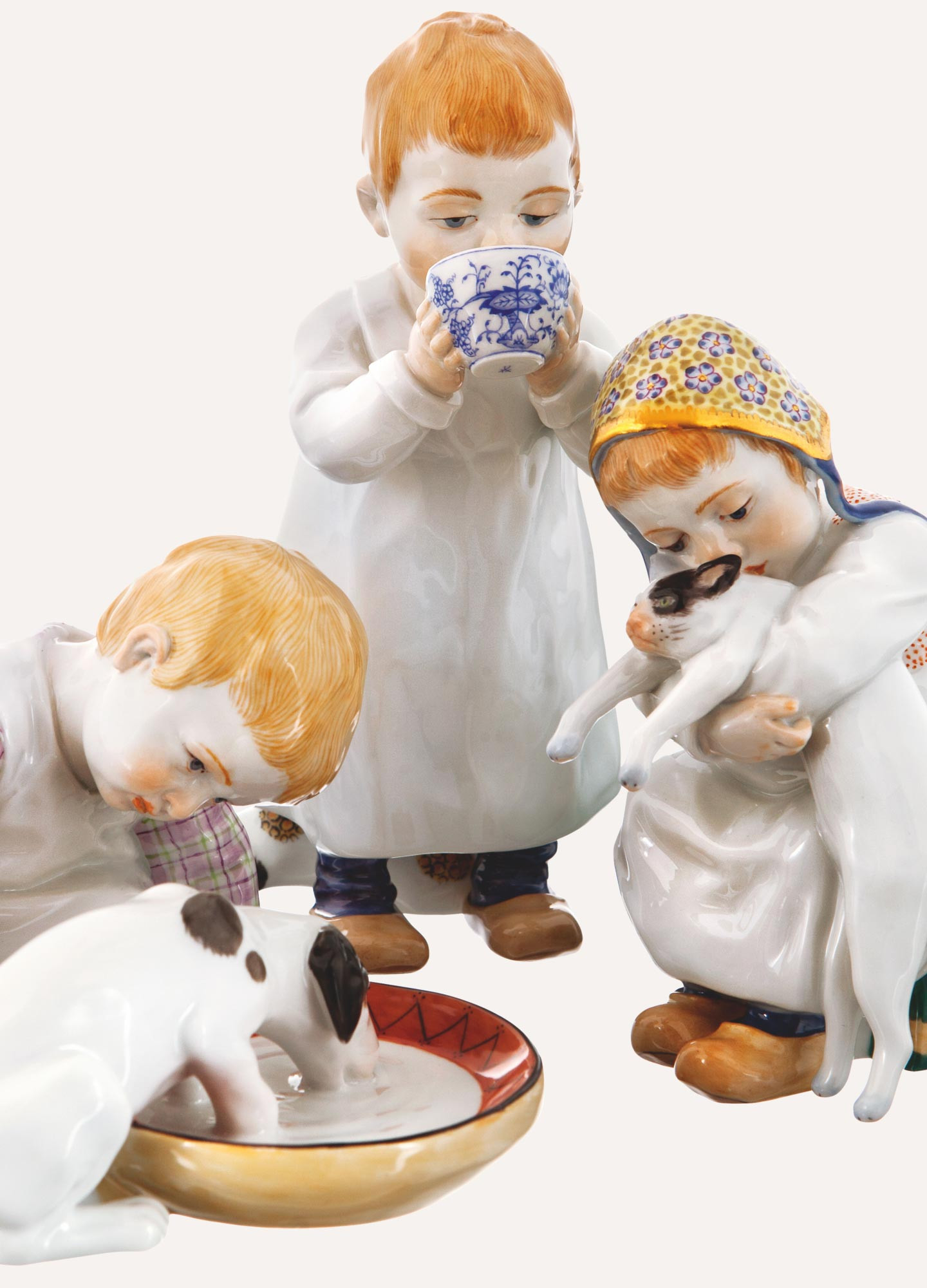
In the 19th century, the work of the Meissen manufactory was characterised by technically perfect reproduction based on art historical models. The uniquely creative, artistic element hardly plays a role in the design of porcelain at this time. Following the great World’s Fairs in London in 1851 and in Paris in 1867, the manufactory’s backward-looking approach resulted in fierce criticism and led to strong discussions about its creative orientation. Many progressive artists were seeking a way out of the conservative academic art world and found it in the Art Nouveau movement of the early 20th century. Young artistic employees assessed the aesthetic possibilities of the medium without bias and broke new ground in the area of porcelain design. A new style of porcelain art in line with the modern zeitgeist emerged. Examples of which are Julius Konrad Hentschel’s “Hentschel Children” and Walter Schrott’s “Woman with Ball”.
In 1907, the Dresden Procession of Princes, a large mural consisting of 25,000 hand-painted panels made of Meissen porcelain tiles, is inaugurated. With a length of 102 metres, it is the largest porcelain artwork in the world.
In 1916, the exhibition hall adjacent to the manufactory opens as a model collection and museum for Meissen porcelain in Triebischtal.
-
1919Max Adolf Pfeiffer and the 1920s
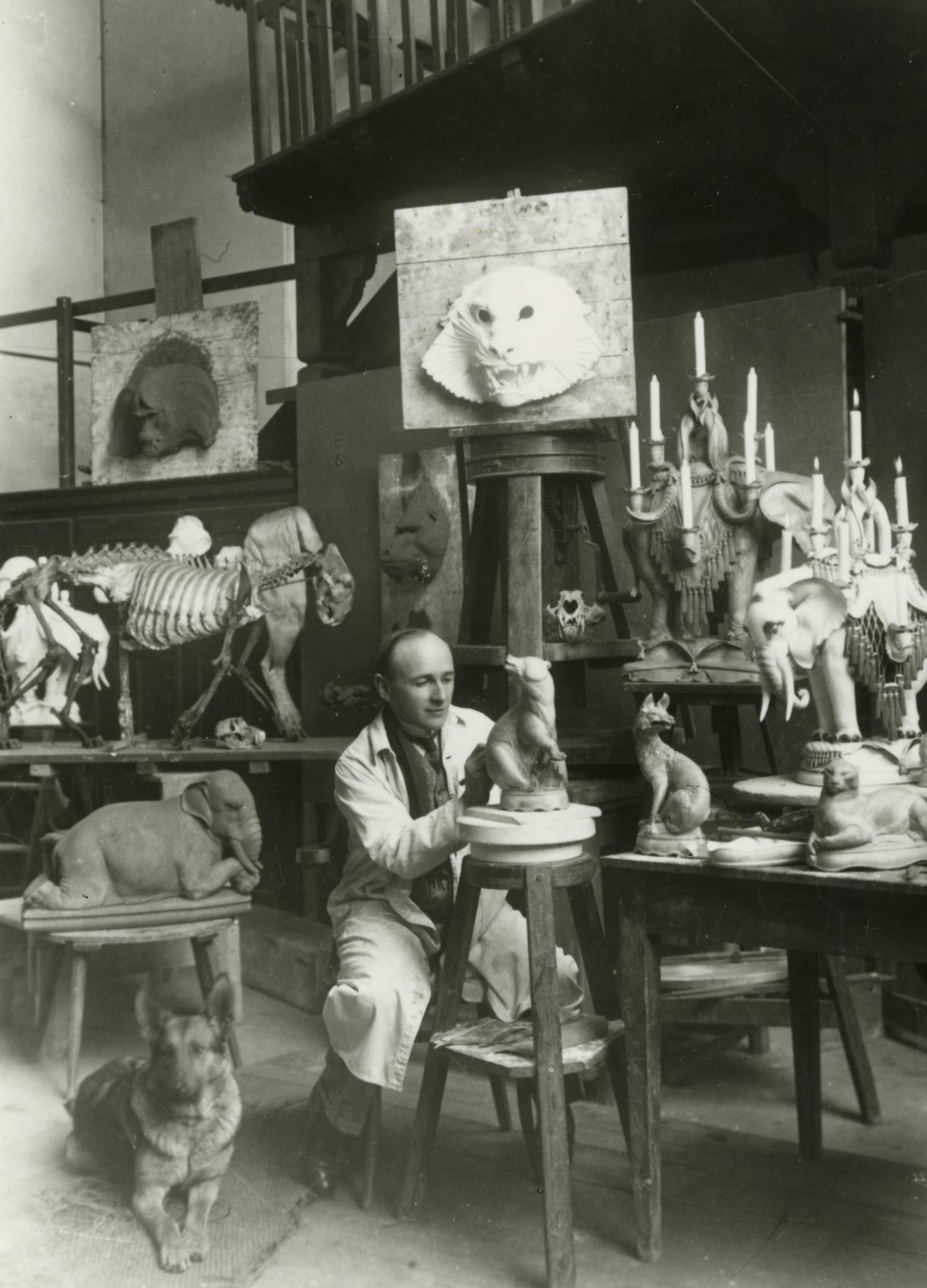
In 1918, with the fall of the German monarchy, the Meissen’s name is changed to the Staatliche Porzellan-Manufaktur Meissen.
In this same year, Max Adolf Pfeiffer is appointed director of the manufactory. Under his direction, Meissen’s artistic achievements reached a level comparable to those of its first golden age in the 18th century. Pfeiffer hired exceptionally talented artists such as Paul Scheurich, Max Esser, Ernst Barlach, and Gerhard Marcks, who opened porcelain up to new forms of expression. The artists created contemporary figurines, vessels, and decorations that drew inspiration from the great creations of Johann Joachim Kaendler in the 18th century while at the same time break entirely new ground for the porcelain art of the 20th century.
In 1919, “Böttger Stoneware” was rediscovered and the name was entered in the trademark register of the Berlin Patent Office.
To mark the 200th anniversary of Augustus the Strong’s death, a reinterpretation of the “Temple of Honour” was produced in 1933. The “Temple of Honour” was created by Johann Joachim Kaendler in 1748, and is believed to have been used on 5 March 1749, on the occasion of the name day of Friedrich August II. The centrepiece in the style of a triumphal arch consisting of 123 individual parts and is the largest of its kind made of Meissen porcelain. The original piece from Kaendler’s day remains lost to this day.
-
1941MEISSEN during National Socialism
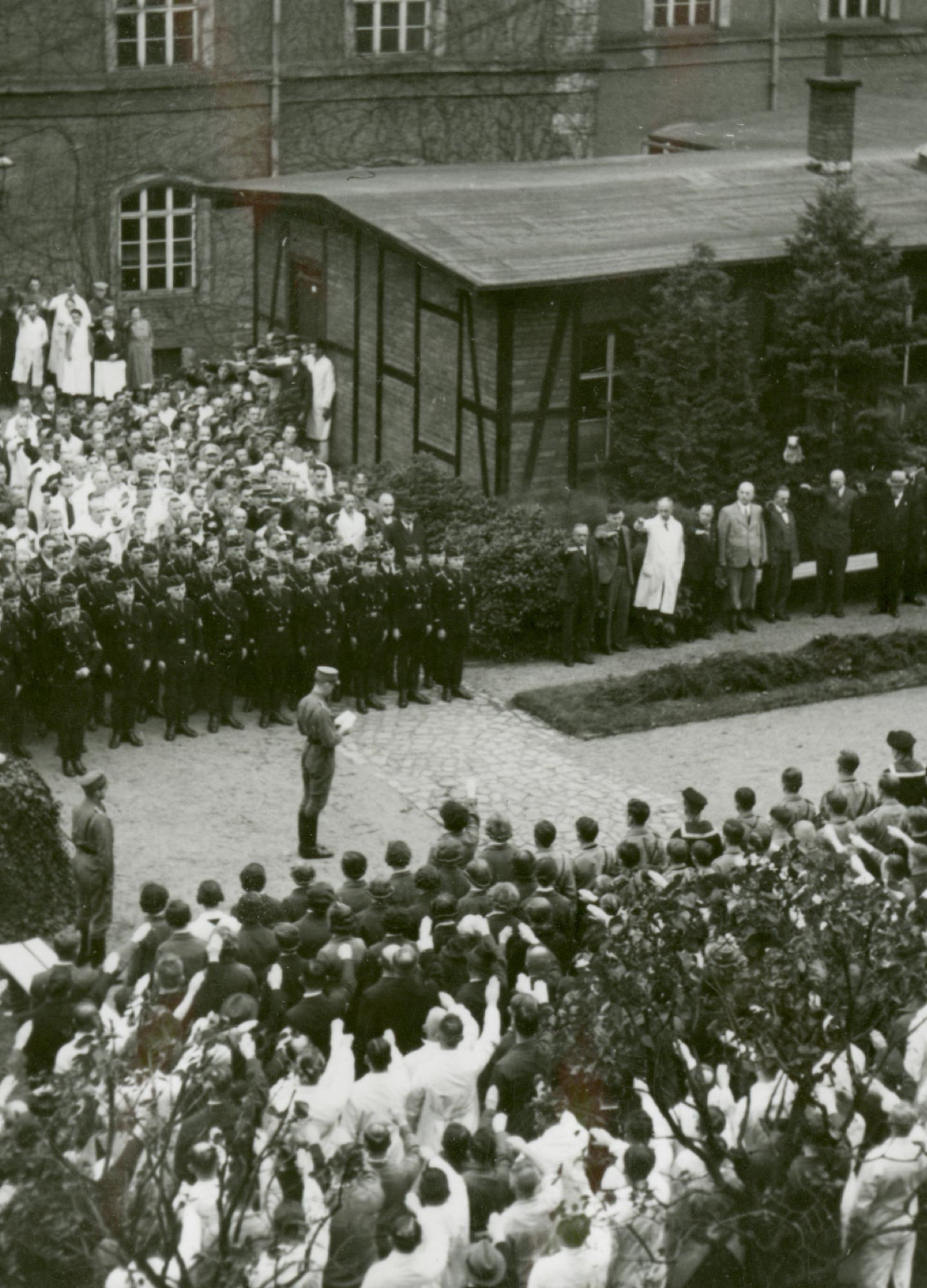
An historical analysis of the manufactory during the National Socialist era hasn’t been recorded. Documents of the time, however, present the manufactory’s ambivalent situation: A company appeal on 2 October 1941, for example, announced the set goal of becoming a model plant for National Socialist Germany. A number of commissioned table services, busts, medals, and sculptures by high-ranking party members and military officers, but also ministers and diplomats bear witness to this alignment. In 1942/43, a new department for chemical-technical porcelain was founded, allowing the manufactory to take on arms orders. In doing so, the manufactory continued to produce during the war and was able to save some of its employees from the front lines.
During the Second World War the production of porcelain was greatly impeded by the lack of raw material and manpower. In 1945, work in the manufactory stopped altogether, and in 1950 the company was returned to the GDR by the Soviet occupying forces.
-
1960sCollectively Artistic Development
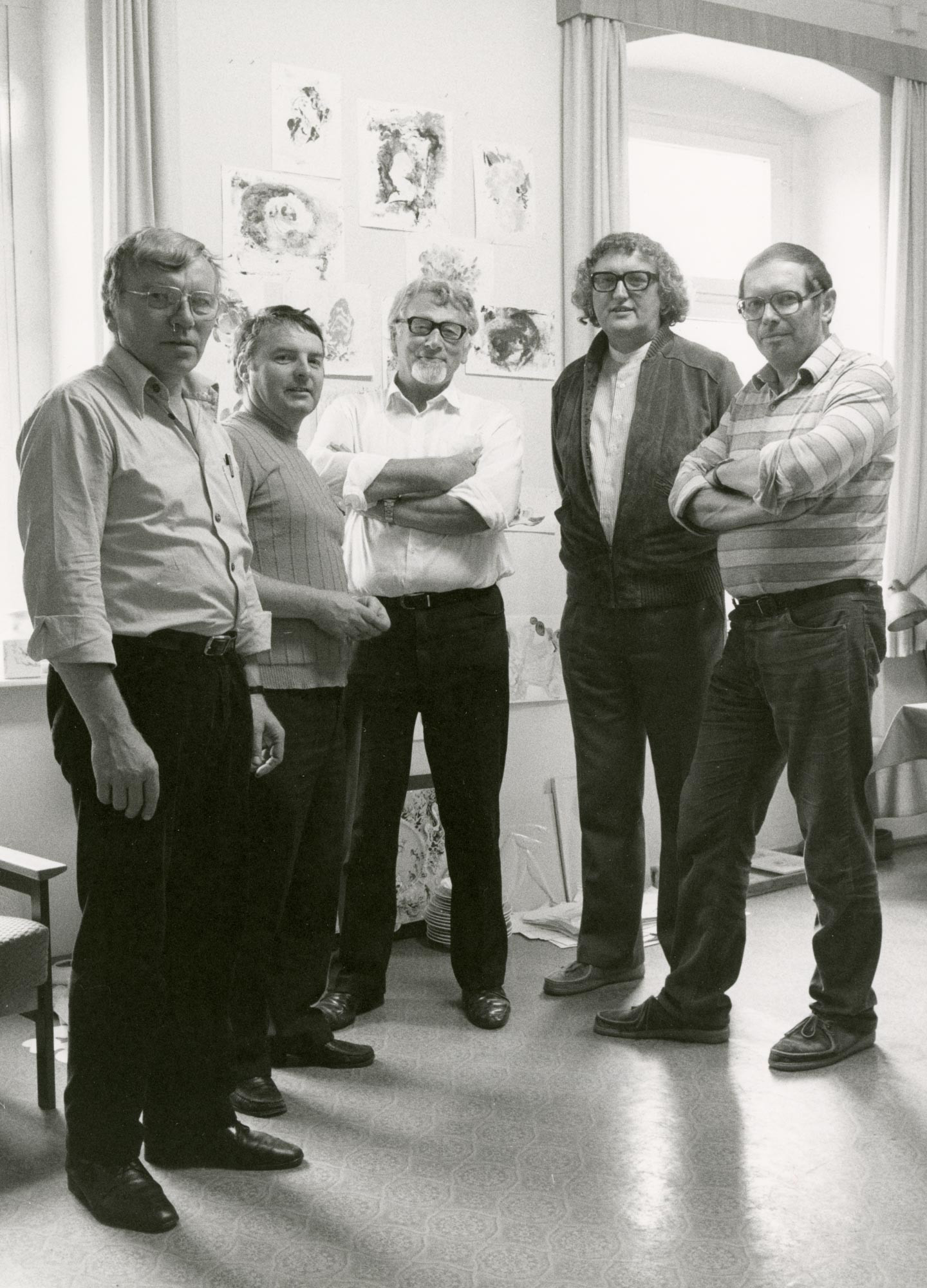
In the 1960s, the Collectively Artistic Development was founded – an artists’ collective that will decisively shape the appearance of contemporary Meissen porcelain. The main figures from the collective are the designer Ludwig Zepner, sculptor Peter Strang, and painters Heinz Werner, Rudi Stolle, and Volkmar Brettschneider.
At the beginning of the 1970s, Ludwig Zepner’s “Großer Ausschnitt” table service design was developed. Nearly every year, Meissen introduces new decorative patterns using different painting techniques for the service ensemble. One highlight of this development is the “Arabian Nights” motif created by Heinz Werner. In this design, he stages a dynamic scenic miniature painting that is rich with fantasy and is inspired by the world of Oriental folk tales.
The conflict between artistic aspirations and commercial interests has always been one of the greatest challenges facing the manufactory. With the introduction of its Atelier porcelains at the end of the 1970s, MEISSEN created a format for unique works that offered manufactory sculptors, painters, and designers the creative space to break new ground in porcelain design and experiment freely.
The over 300-year history of the manufactory always serves as the artists’ source of inspiration. In a formal sense, they base their designs on historic models and use traditional techniques to create their works, while at the same time always placing them in a new context. This combination of a continued design and manufacturing tradition and the stylistic spirit of the current day is the basis of all the artistic production of the Meissen manufactory.
The over 300-year history of the manufactory always serves as the artists’ source of inspiration. In a formal sense, they base their designs on historic models and use traditional techniques to create their works, while at the same time always placing them in a new context. This combination of a continued design and manufacturing tradition and the stylistic spirit of the current day is the basis of all the artistic production of the Meissen manufactory.
-
1991Meissen after reunification
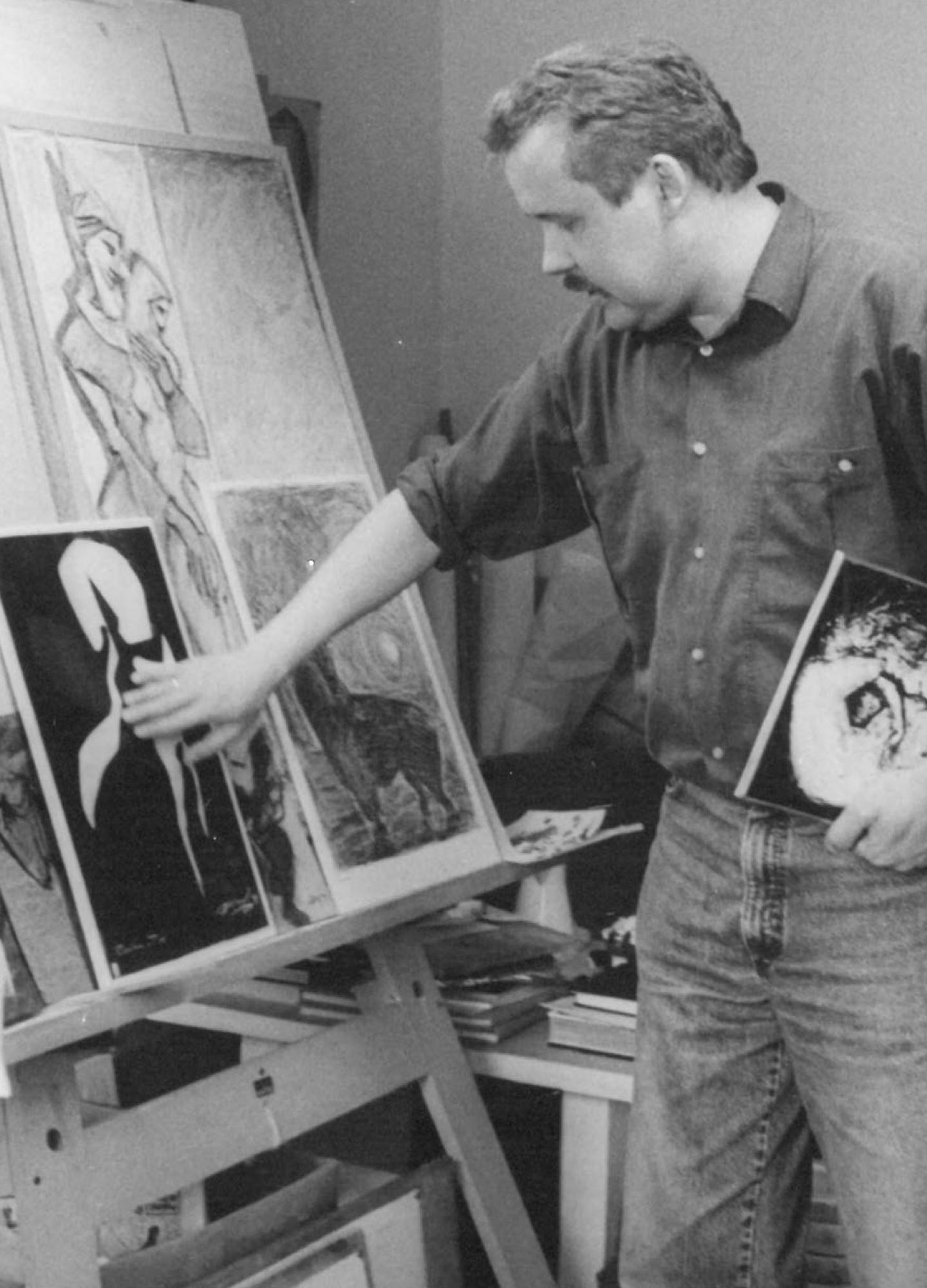
Since 26 June 1991, the Staatliche Porzellan-Manufaktur Meissen GmbH has been under the ownership of the State of Saxony as the sole shareholder.
In 1992, a new generation of artists such as Silvia Klöde, Jörg Danielczyk, Gudrun Gaube, Olaf Fieber, Sabine Wachs, and Andreas Herten took up the banner of the “Kollektiv Künstlerische Entwicklung”.
In 1996, after three years of development, the new “Meissen Waves” table service design was created under the direction of Meissen designer Sabine Wachs. With this design, the Meissen manufactory celebrates the coming of the new millennium.
In 2000, the world’s first organ to feature pipes made of Meissen porcelain was created under the direction of Ludwig Zepners and in collaboration with organ builders.
This wishlist name is already present.

